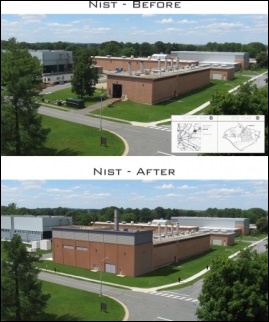
by Brianna Crandall — July 15, 2015—The Census Bureau’s National Processing Center in Jeffersonville, Indiana, recently awarded a $120 million energy savings performance contract (ESPC) to Johnson Controls Government Solutions, a firm that helps the federal government maximize building performance in technology, energy, and security. The contract was awarded by Census on behalf of the National Institute of Standards and Technology (NIST), located in Gaithersburg, Maryland.
The contract is expected to decrease NIST’s environmental impact, and savings on NIST’s utility bills will range from $4.1 to $6.7 million annually over the 25-year life of the contract. It will also earn one-time utility rebates of up to $3.2 million when finished and operating. According to NIST, this is the fifth-largest contract of its kind awarded by any civilian agency since President Obama launched the Performance Contracting Challenge in 2011.
The main feature of the energy conservation effort will be the construction of a combined heat and power (CHP) plant, a 4,100-square-foot building addition onto the NIST campus’s Central Utility Plant that will save NIST $3.9 million alone. With a natural gas-fired turbine, the CHP is anticipated to offset 40% of the campus’s electric load. This amount of generated electricity will reportedly cost less than if NIST were to purchase it from the local electric company. The CHP will recover high-temperature turbine exhaust heat that will meet almost 75% of the campus’s steam load.
Second, the contract plans to increase the campus’ free cooling capacity with the replacement of the two oldest chillers with dual compressor chillers in the Central Utility Plant. These new chillers will also rid the plant of an ozone-depleting substance called R-22 refrigerant, beating the scheduled phaseout of R-22 by three years.
When all of the ESPC work is completed, the environmental impact will be the same as reducing CO2 emissions equivalent to removing 9,000 passenger vehicles from the road, or 100,000 barrels of oil being consumed, or the energy used by 4,000 homes in one year, calculates NIST.
Taxpayers have limited risk with an ESPC because it will be completely financed with zero upfront funding from the federal government, explains NIST. The contract guarantees annual savings both in terms of energy consumption reductions and corresponding utility bill reductions. The contractor will be paid after all planned work has been satisfactorily completed and fully commissioned—estimated around January 2018.




